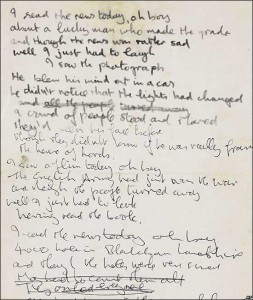There are millions of writers spread across the face of the earth, churning out tales both great and small; well over 200,000 of their books achieved the nirvana of publication last year, alone. A few hundred of them are considered successful at the game. And yet, out of this raucous horde of wordsmiths only the tiniest fraction of them engage in the writing of historical fiction set in Antiquity. Why the disparity?
The most-cited obstacle among those writers inclined to try their hand at ancient historical fiction is the difficulty in researching the times. The ancient historical is cousin to the created-world fantasy; both require vast amounts of detail in order to breathe life into their respective narratives. But, where fantasy is created from imagination that is reinforced with research, the ancient historical is built out of existing research that is reinforced with imagination. Thus far, for Serpent of Hellas – my upcoming novel about the battle of Artemisium – I’ve had to research the topography of Attika (that region of Greece under Athenian control), farming in the 5th century BC, and the social and legal ramifications of ancient Greek illegitimacy. Was I writing a fantasy, I could base my creative decisions on a mix of research and fancy . . . which is not as easy as it sounds. Fantasy authors cut their own puzzle pieces from the fabric of history; the good ones work hard at smoothing the edges of their created bits, ensuring what’s borrowed meshes perfectly with what’s imagined. The bad ones simply arrange their pieces willy-nilly, without thought for cohesion or logic.
Historical authors also assemble the pieces of our narrative puzzle from the fabric of history. But rather than cutting and shaping to meet our needs, we tease out the threads of a single tapestry to illuminate the colors and textures within. Some threads are bold, representing the deeds and personalities that resonate through time. Others are more subtle, muted, hidden, colorless, even forgotten. Themistokles versus the nameless soldier who lit the warning beacons on Skiathos; Thermopylae versus Artemisium. Each is important in their own right, unable to exist without the other, but one is given precedence in popular imagination while the other fades to obscurity. It becomes the job of historical fiction, then, to go where historians can’t – or won’t.
The worlds we write about are not necessarily the “real” world. True, many of the events that sustain our prose actually happened; our cast of characters includes men and women, who lived, loved, died, and were immortalized in history. But our portrayal of them, of their times, is no more real than Tennyson’s Arthur in Idylls of the King. It’s an illusion, you see. The phrase we use is historical accuracy, and it is as important to the genre as the willing suspension of disbelief is to fantasy. The world must appear real, torn from the pages of a text book, and the more real it seems the more latitude the writer has in introducing anachronisms. And ancient historicals require anachronisms; they require a touch of inaccuracy in order for the writer to translate the attitudes and mores of so remote a time into modern vernacular.
So, we come back to research, to peering at the tiny threads of a tapestry to understand the colors, textures, tastes, and smells of the world that created it. Much of the information we uncover will, if we’re subtle, appear almost invisible on the page. It will exist as a color palette, a vocabulary, a style of description; research is the stage upon which the actors deliver their lines: the skeleton of the theater, the boards underfoot, the costumes and set dressing. And when the research eludes us – and it will – imagination must fill the gap.
The unanswered questions can be great or small: what did Themistokles and Leonidas discuss the night before their respective forces deployed for Artemisium and Thermopylae, respectively? What did the temple of Artemis that lent Artemisium its name look like? In what year was the ancient monument to the battle at Artemisium dedicated? Barring hard facts, the answers must come from within – though filtered through the threads already known to us and shaped to fill that tiny void in the tapestry. The artistry is in making the created bits match so perfectly to history that only an expert can tell the difference. And that is also the beauty of the ancient historical: if done well, it informs the reader’s own studies on the time in question, breathing life into men and women who might otherwise be forgotten, making flesh the cold marble busts of great men, and lending a sense of blood and thunder to events that shaped our world.
Scott Oden is the author of The Lion of Cairo, Men of Bronze, Memnon, and the forthcoming Serpent of Hellas. Hailing from the hills of rural North Alabama, his fascination with far-off places began when his oldest brother introduced him to the staggering and savage vistas of Robert E. Howard and Harold Lamb.Though Oden started writing his own tales at the age of fourteen, it would be many years before anything would come of it. In the meantime, he had a brief and tempestuous fling with academia before retiring to the private sector, where he worked the usual roster of odd jobs – from delivering pizza to stacking paper in the bindery of a printing company to clerking at a video store. Nowadays, Oden writes ancient historicals and historical fantasy from his family home near Somerville.




